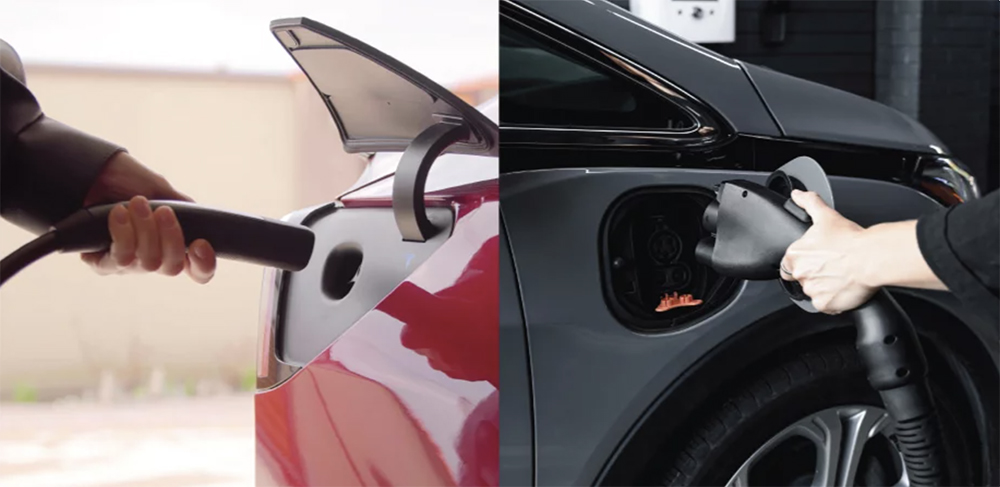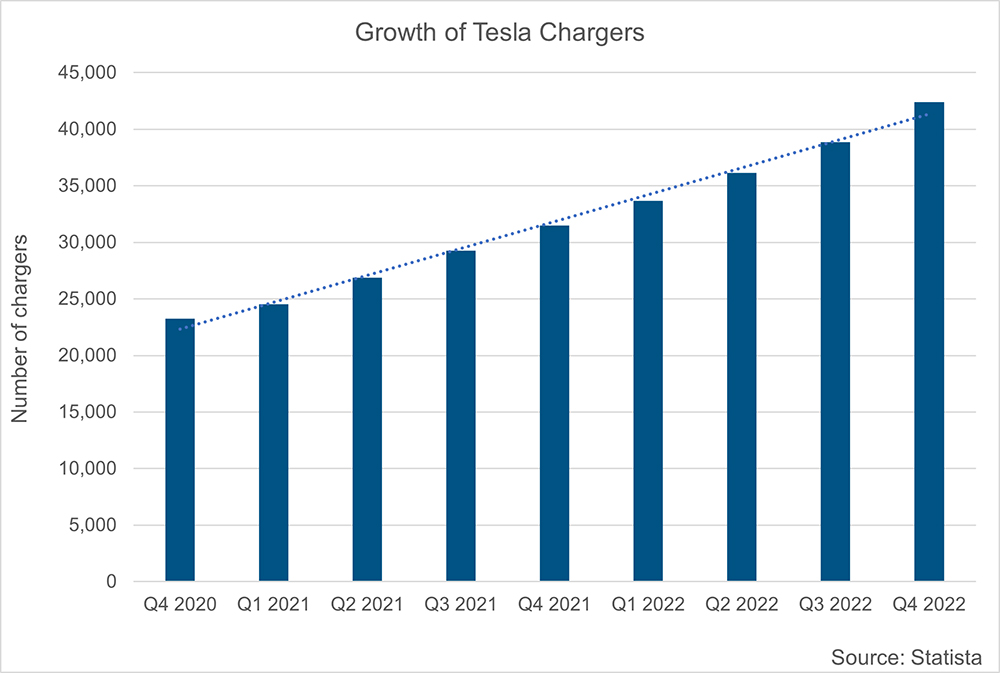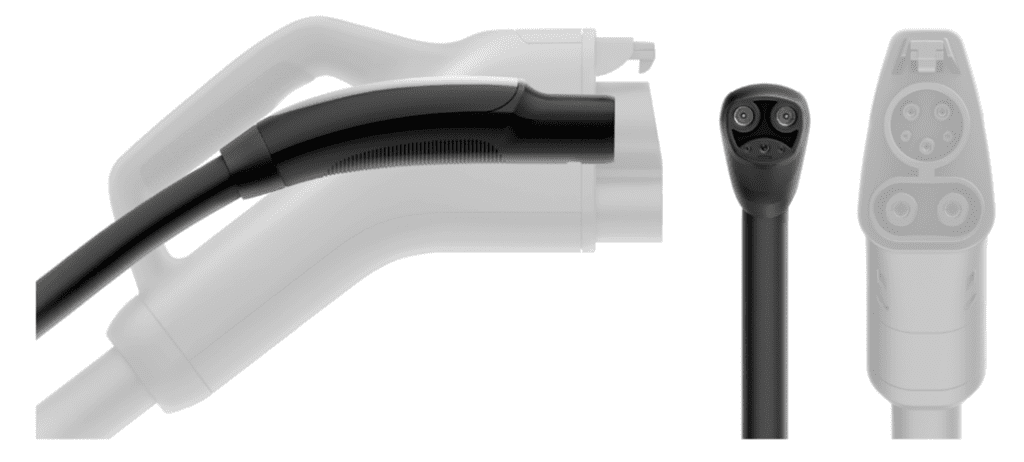
[ad_1]

Sponsored by AMP.
By Sanjay Sharma, www.amp.tech
Tesla has taken an enormous leap in accelerating EV adoption and bringing the imaginative and prescient of fresh vitality nearer, by saying the opening of its EV connector design to the world. The announcement invitations charging community operators and automobile producers to put in the Tesla charging connector and cost port, now known as the North American Charging Commonplace (NACS), on their tools and automobiles.
Tesla Superchargers are designed to offer a fast and handy manner for Tesla house owners to cost their automobiles whereas on lengthy highway journeys or throughout prolonged stays away from house. Since then, Tesla has outgrown the variety of charging stations and has made a robust community with uptime of greater than 99%.
CCS, then again, has been round for a while now and is a direct present (DC) quick charging protocol that’s compliant with ISO-15118, current on automobiles produced by European and American automotive firms.
The query stays the identical: Which charging normal to decide on?
If you happen to’re severe about electrical automobiles, charging is a precedence, and that is the place NACS or CCS performs an important position. NACS charging stations can now get your EV as much as 350 kilowatts of charging energy, matching CCS – meaning your EV can go from nearly empty to 80% charged in simply 20-Half-hour! And if pace is essential to you, then quicker charging occasions are a game-changer.
What number of chargers are there for NACS VS CCS?
As per a latest article revealed by Electrek, greater than 25% of the CCS chargers within the Higher Bay Space have been non-functional. A random analysis of 10% of the EVSEs, roughly 8 days after the primary analysis, demonstrated no general change in performance. This degree of performance seems to battle with the 95 to 98% uptime reported by the EV service suppliers (EVSPs) who function the EV charging stations. In the identical survey, solely 4% of Tesla house owners reported a significant issue with the Tesla closed DCFC system.
Tesla has 17,740 quick charging ports in america, accounting for 62% of the entire DC quick charging ports within the nation, U.S. Division of Vitality (DOE) information confirmed.

North American Charging Commonplace (NACS)
Tesla’s NACS is North America’s most confirmed and extensively used charging normal. The NACS connector is an alternative choice to the CCS Combo connector and OEM giants like Ford are already within the pursuit to undertake it over CCS.
The corporate started putting in Superchargers at strategic areas in 2012 and has continued to develop the community and efficiency over time. The Superchargers are designed to offer a fast and handy manner for Tesla house owners to cost their automobiles whereas on lengthy highway journeys or throughout prolonged stays away from house. Since then, Tesla has outgrown the variety of charging stations and has made a robust community with uptime of greater than 99%.
Whereas detractors are fast to criticize Tesla for introducing yet one more normal to the crowded charging normal area, implying this transfer is meant as a shortcut for Tesla’s Supercharger community to take part in federal incentives, the potential influence of this announcement is far more refined and result in a a lot easier EV charging ecosystem.
Combo Cost System (CCS)
When the CCS normal was launched in 2011, AC charging was — and stays — dominated by the IEC 62196 Sort 1 connector (often known as the SAE J1772 connector) in North America and Japan and the IEC 62196 Sort 2 connector in Europe.
DC charging, which permits for much greater cost charges, was a mixture of CHAdeMO from Japan and GB/T 20234.3 from China. Each these connectors require a separate inlet for AC and DC.
The authors of CCS needed to ascertain a single inlet envelope that would cut back confusion and overhead whereas remaining backward appropriate with J1772 (Sort 1) and Sort 2 connectors, which had established regional dominance. The proposed answer was to increase the Sort 1/2 envelopes with a two-pin DC extension. The brand new Combo 1 and Combo 2 (and therefore the identify CCS was born) connectors each remained backward appropriate and permit for the introduction of high-speed DC charging.
Why NACS?
The Tesla cost connector cleverly reuses the AC pins for DC charging, and communication relies on a single-wire CAN spec for DC use circumstances. Since all automobiles at Supercharger stations have traditionally been Tesla automobiles, use circumstances like Plug N’ Cost, have been achieved by far easier means, enabled partially by the truth that Tesla has management over each the automobile and the charger.
The result’s a connector that’s:
- Extremely small
- Easy to make use of, and
- A part of an general easier ecosystem of chargers and compatibility considerations
- Efficiency benefits, as a consequence of tighter management of the connector and inlet design
Tesla’s NACS announcement alerts the chance that different automobiles and chargers can faucet into this simplicity.

Under is a fast comparability desk outlining the differentials between the 2 charging requirements:

How did Tesla obtain the compact design of NACS?
They did this by sharing the AC and DC pins. This, nevertheless, creates complexity to the purpose that the very best security score (ASIL D) is utilized to the hazard of connecting a 400V DC battery to a grid that may be as little as 120V AC. Complexity in Tesla NACS may very well be a bottleneck for its mass adoption. The interface between the charging station and the electrical automobile by way of NACS takes quite a lot of parts and programs that work collectively to offer quick and dependable charging for electrical automobiles. If this was to occur, your toaster oven will probably catch fireplace.
So how will we mitigate this hazard?
The hazard of energizing your private home energy grid with 400V DC will trigger home equipment to burn and is exclusive to NACS. Tesla makes use of a classy Battery Administration System (BMS) with sensible cost port door controls and different automobile software program which has the suitable {hardware} redundancy. As a result of fairly just a few BMSs and automobile controllers aren’t simply modifiable, this isn’t a very good choice for some OEMs because of the complexities of re-validate a essential security system. For these OEMs who’ve the potential of vertically integrating, or working with high-tech Tier 1 suppliers, NACS offers OEMs a bonus to the primary charging community.
[ad_2]